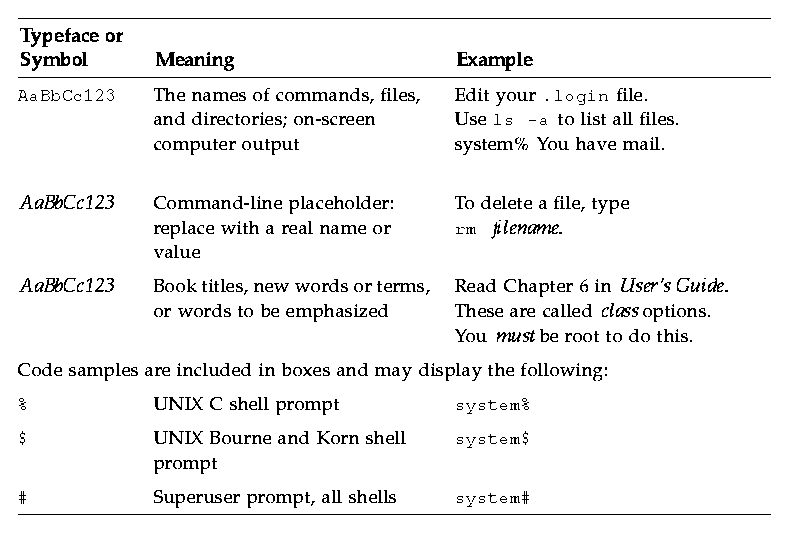




Common Desktop Environment: Internationalization Programmer's Guide
Preface
Contents of Chapter:
- Who Should Use This Book
-
- How This Book Is Organized
-
- Related Publications
-
- What Typographic Changes and Symbols Mean
-
The Common Desktop Environment: Internationalization Programmer's Guide provides information for internationalizating the desktop, enabling applications to support various languages and cultural conventions in a consistent user interface.
Specifically, this guide:
- Provides guidelines and hints for developers on how to write applications for worldwide distribution.
- Provides an overall view of internationalization topics that span different layers within the desktop.
- Provides pointers to reference and more detailed documentation. In some cases, standard documentation is referenced.
This guide is not intended to duplicate the existing reference or conceptual documentation but rather to provide guidelines and conventions on specific internationalization topics. This document focuses on internationalization topics and not on any specific component or layer in an open software environment.
Who Should Use This Book
This book provides various levels of information for the application programmer and developer and related fields.
How This Book Is Organized
Explanations of the contents of this book follow:
Chapter 1, "Introduction to Internationalization," provides an overview of internationalization and localizing within the desktop, including locales, fonts, drawing, inputting, interclient communication, and extracting user visual text. Information on the significance of internationalization standards is also provided.
Chapter 2, "Internationalization and the Common Desktop Environment," covers the set of topics that developers commonly need to consider when internationalizing their applications, including locale management, localized resources, font management, localized text tasks, interclient communication for localized text, and internationalized functions.
Chapter 3, "Internationalization and Distributed Networks," discusses topics related to handling encoded characters in distributed networks. Basic principles and examples for interclient interoperability are provided to guide developers in internationalized distributed environments.
Chapter 4, "Motif Dependencies," topics include internationalized applicaitons, locale management, localized text, international User Interface Language (UIL), and localized applications.
Chapter 5, "Xt and Xlib Dependencies," topics include locale management, localized text tasks, font set metrics, interclient communications conventions for localized text, and charset and font set encoding and registry information.
Appendix A, "Message Guidelines," is a set of guidelines for writing messages.
Related Publications
See the following documentation for additional information on topics presented in this book:
- ISO C: ISO/IEC 9899:1990, Programming Languages -- C (technically identical to ANS X3.159-1989, Programming Language C).
- ISO/IEC 9945-1: 1990, (IEEE Standard 1003.1) Information Technology - Portable Operating System Interface (POSIX) - Part 1: System Application Program Interface (API) [C Language].
- ISO/IEC DIS 9945-2: 1992, (IEEE Standard 1003.2-Draft) Information Technology - Portable Operating System Interface (POSIX) - Part 2: Shell and Utilities.
- OSF/Motif 1.2: OSF Motif 1.2 Programmer's Reference, Revision 1.2, Open Software Foundation, Prentice Hall, 1992, ISBN: 0-13-643115-1.
- Scheifler, W. R., X Window System, The Complete Reference to Xlib, Xprotocol, ICCCM, XLFD - X Version 11, Release 5, Digital Press, 1992, ISBN: 1-55558-088-2.
- X/Open: X/Open CAE Specification System Interface Definition, Issue 4, X/Open Company Ltd., 1992, ISBN: 1-872630-46-4.
- X/Open: X/Open CAE Specification Commands and Utilities, Issue 4, X/Open Company Ltd., 1992, ISBN: 1-872630-48-0.
- X/Open: X/Open CAE Specification System Interface and Headers, Issue 4, X/Open Company Ltd., 1992, ISBN: 1-872630-47-2.
- X/Open: X/Open Internationalization Guide, X/Open Company Ltd., 1992, ISBN: 1-872630-20-0.
- ISO/IEC 10646-1:1993 (E): Information Technology - Universal Multi-Octet Coded Character Set (UCS). Part 1: Architecture and Basic Multilingual Plane.
What Typographic Changes and Symbols Mean
Table P-1 describes the type changes and symbols used in this book.
Table P-1 Typographic Conventions






Generated with CERN WebMaker











